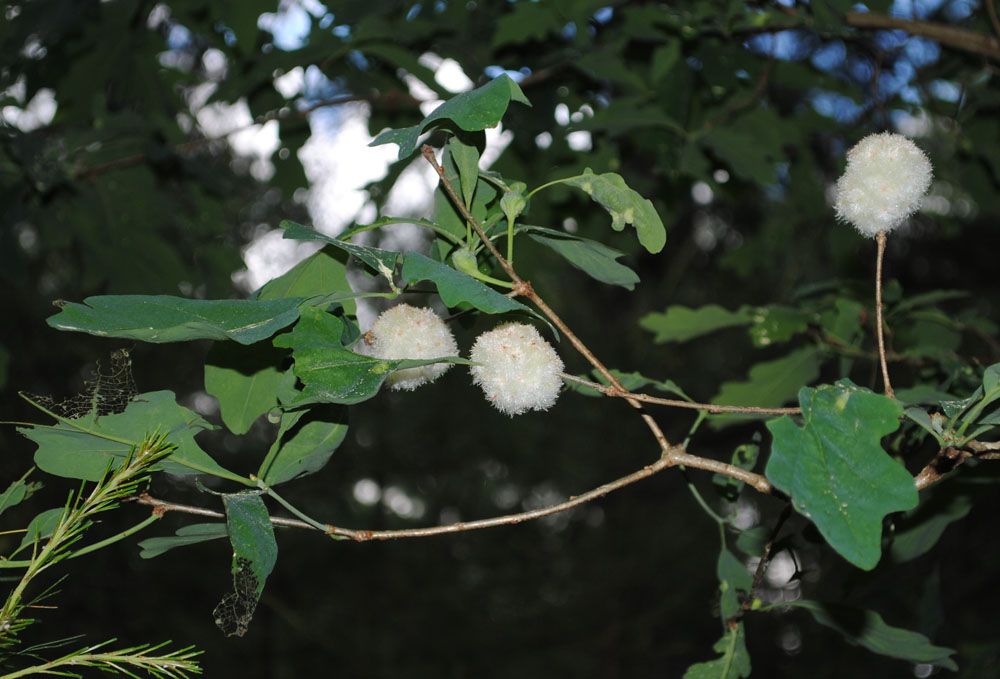
Wool Sower Gall Wasp – Callirhtis seminator
Wool Sower Gall Wasp (Callirhtis Seminator)
Latin Name: Callirhtis Seminator
Common Name: Wool Sower Gall Wasp
Appearance:
- The wool sower gall is a unique and distinctive plant growth caused by the secretions of Callirhytis seminator, a small gall wasp.
- These wasps are roughly 1/8 inch long, dark brown, and have a flattened abdomen from side to side.
- The grubs are white to transparent, plump, and legless. Their heads are blobs that are more or less shapeless.
- Cotton balls with pink dots appear to have developed on some recently placed oaks on campus. Wool-sower gall is a form of tree gall that looks like this.
Hosts plants:
White oak is the only host for the wool sower gall wasp.
Damages caused by Wool Sower Gall Wasp:
The wool sower gall is induced by the secretions of Callirhytis seminator, a tiny gall wasp. Wool sower gall only appears in the spring and is exclusively found in white oak. Seed-like structures can be found in the galls. Inside these structures, gall wasps grow. (The oak seed gall is another name for this gall.) Because wool sower galls are rarely prevalent, the health of afflicted trees is rarely affected.
Description about Leaf chewers:
Insect chewing damage to plants can take numerous forms. Foliage or flowers may vanish when certain insects eat them. Occasionally, the plant will appear ragged and, upon closer inspection, will reveal bitten edges or cores. Plants can be cut at the root and topple over, or twigs can be girdled and die as a result. Mining or boring is the process of causing harm to a plant through chewing. Only the upper or lower surfaces are sometimes destroyed, producing a brown, burned look or skeletonization (openings between the veins).
Life History and Habits:
Wool sower gall is a white oak-specific “leaf gall” that only appears in the spring. Callirhtis seminator eggs are laid in the winter and hatch just as the oaks’ new leaves emerge in the spring. When the gall is separated, tiny seed-like structures appear within, where the gall wasp grubs grow (the wool sower gall is also called the oak seed gall). When the gall is separated, little seed-like structures appear within, where the gall wasp grubs grow. Gall wasps have generations that alternate between developing one form of gall (leaf gall) and their larvae developing another type (stem gall).
